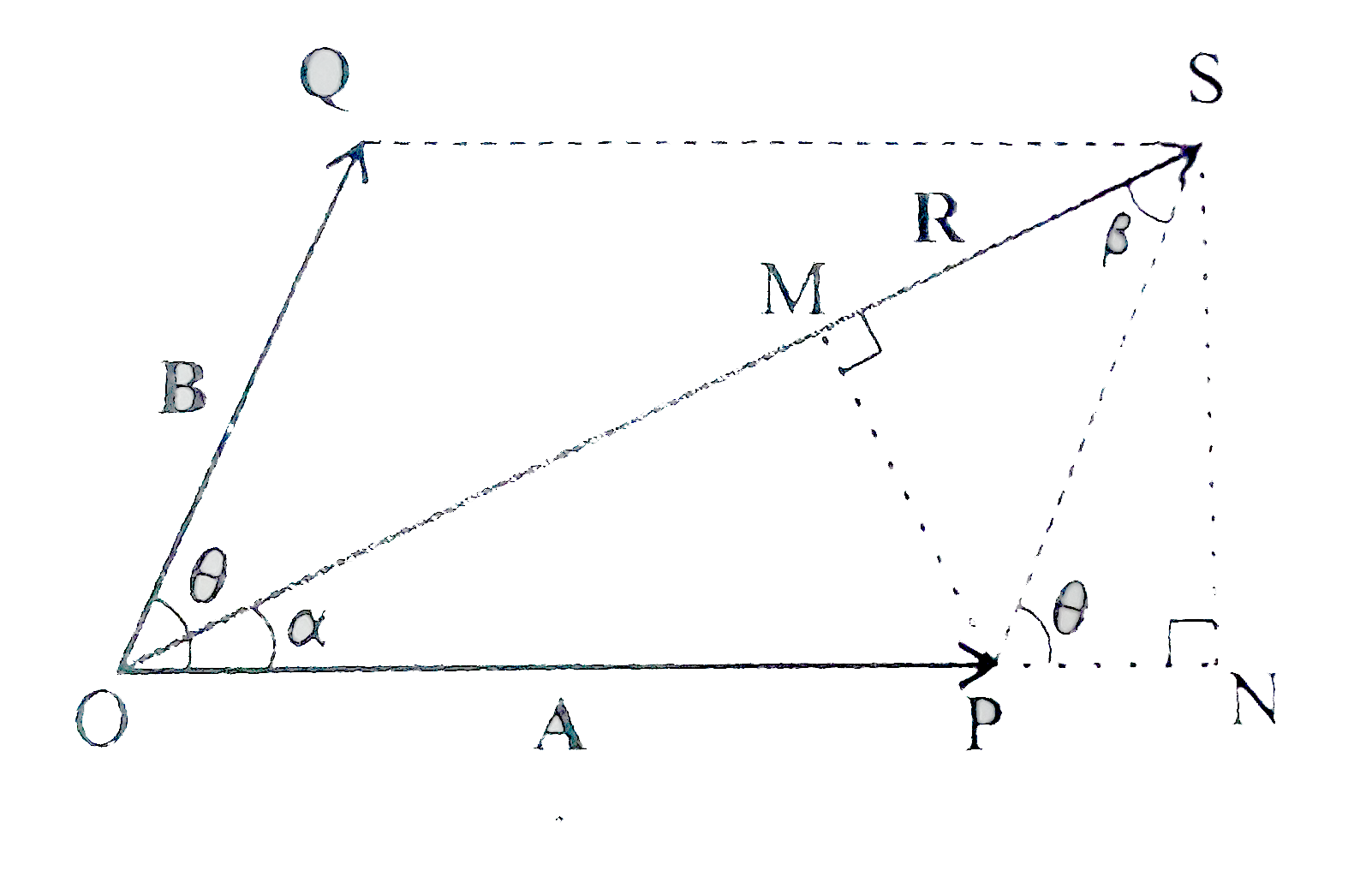For the resultant of two vectors to be maximum , what must be the angle between them ?
The correct Answer is:A
To determine the angle between two vectors for their resultant to be maximum, we can follow these steps:
Step 1: Understand the Resultant of Two Vectors
When two vectors, say A and B, are combined, the resultant vector R can be calculated using the formula:
R=√A2+B2+2ABcosθ
where θ is the angle between the two vectors.
Step 2: Analyze the Cosine Function
The term cosθ plays a crucial role in determining the magnitude of the resultant vector. The value of cosθ ranges from -1 to +1. To maximize the resultant vector R, we need to maximize the value of cosθ.
Step 3: Find the Maximum Value of Cosine
The maximum value of cosθ is 1, which occurs when:
θ=0∘
Step 4: Substitute Back to the Resultant Formula
When θ=0∘, the formula for the resultant becomes:
R=√A2+B2+2AB⋅1=√A2+B2+2AB
This shows that the magnitude of the resultant vector is maximized when the two vectors are aligned in the same direction.
Conclusion
Thus, for the resultant of two vectors to be maximum, the angle between them must be:
θ=0∘
Final Answer
The angle between the two vectors for maximum resultant is 0 degrees.
---
When two vectors, say A and B, are combined, the resultant vector R can be calculated using the formula:
R=√A2+B2+2ABcosθ
where θ is the angle between the two vectors.
The term cosθ plays a crucial role in determining the magnitude of the resultant vector. The value of cosθ ranges from -1 to +1. To maximize the resultant vector R, we need to maximize the value of cosθ.
The maximum value of cosθ is 1, which occurs when:
θ=0∘
When θ=0∘, the formula for the resultant becomes:
R=√A2+B2+2AB⋅1=√A2+B2+2AB
This shows that the magnitude of the resultant vector is maximized when the two vectors are aligned in the same direction.
Thus, for the resultant of two vectors to be maximum, the angle between them must be:
θ=0∘
The angle between the two vectors for maximum resultant is 0 degrees.
Topper's Solved these Questions
- VECTORSBook:GRB PUBLICATIONChapter:VECTORSExercise:MORE THAN ONE CHOICE IS CORRECT
Explore 15 Videos
- VECTORSBook:GRB PUBLICATIONChapter:VECTORSExercise:ASSERTION- REASON
Explore 1 Video
- VECTORSBook:GRB PUBLICATIONChapter:VECTORSExercise:PROBLEMS FOR PARCTICE
Explore 23 Videos
- UNITS AND DIMENSIONSBook:GRB PUBLICATIONChapter:UNITS AND DIMENSIONSExercise:Link Compression
Explore 6 Videos
Similar Questions
Knowledge Check
For the resultant of the two vectors to be maximum, what must be the angle between them
A0∘B60∘C90∘D180∘The resultant if two vectors will be maximum, if they are_________.
Aequal vectorsBparallel vectorsCcoplanar vectorsDorthogonal vectorsThe resultant of two vectors at right angles is 5 N. If the anagle between them is 120∘ and the resultant is √13 then the vector are
A3 N,4 NB√2N,√5NC√3N,√4ND√7N,√3N
The resultant of two equal velocities is equal to either. What is the angle between them?
View SolutionProve that the resultant of two vector of equal magnitude is equal to either vector if the angle between the two vector is 120∘
View SolutionTwo vectors →A and →B have precisely equal magnitudes. For the magnitude of →A+→B to be larger than the magnitude of →A−→B by a factor of n, what must be the angle between them?
View SolutionThe resultant of two forces of magnitude 5 N and 3 N trisects the angle between them. Calculate the angle between them.
View SolutionFind the magnitude and direction of the resultant of two vectors A and B in the terms of their magnitudes and angle θ between them.

View Solution

